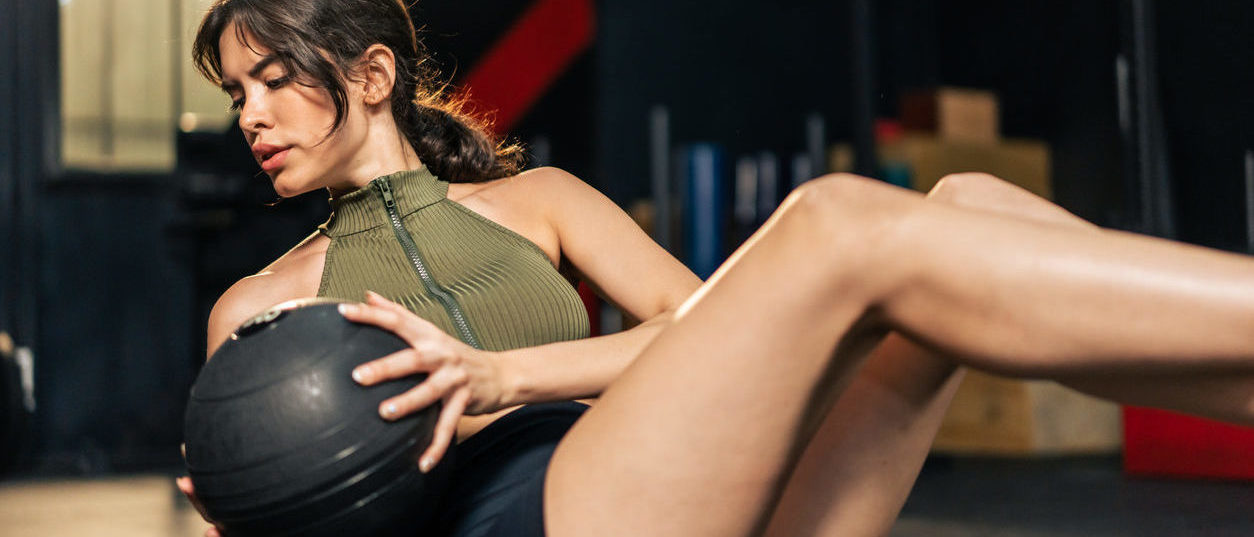
Medicine balls and exercise balls are two distinct types of fitness equipment, both valuable for different reasons. Affordable, versatile, and space-efficient, they are excellent additions to any workout routine – whether at home, in the gym, or as part of physiotherapy and rehabilitation.
Medicine balls
Medicine balls are weighted balls typically used to add resistance to strength training, increase power, and improve coordination. Slightly larger than a basketball, they usually range in weight from 1kg to around 11kg and are made from durable materials like rubber, leather, or synthetic composites. Despite sometimes being referred to as “exercise balls,” they serve a very different purpose.
One of the key benefits of a medicine ball is its versatility. Because it can be moved freely in any direction, it helps recruit a wider range of muscles, particularly those in the core. Unlike dumbbells or barbells, medicine balls can be thrown, caught, or slammed, allowing you to perform dynamic, full-body exercises that improve strength, endurance and explosiveness.
Medicine balls are often used in:
- Plyometric training – to build explosive power through exercises like medicine ball slams and rotational throws.
- Core workouts – such as Russian twists, weighted sit-ups or V-sits.
- Functional training – replicating sports-specific movements to improve balance, agility and coordination.
- Rehabilitation – particularly for restoring movement and strength after injury.
There are several types of medicine balls, each designed with specific uses in mind:
- Standard medicine balls – Solid and grippy, perfect for general strength and core exercises.
- Dual-grip medicine balls – Feature built-in handles, making them easier to control during dynamic movements or when used for lifting and swinging exercises.
- Wall balls – Larger, softer balls often used in high-intensity workouts and for throwing against walls or targets (not suitable for slamming).
- Slam balls – Heavier, durable balls designed to withstand repeated slamming into the ground. These are often filled with sand and don’t bounce.
Whichever type you use, medicine balls are a simple but highly effective tool for full-body workouts and functional fitness training.
Exercise balls
Exercise balls, sometimes called Swiss balls, stability balls, or physio balls, are large, inflatable balls filled with air and designed primarily to improve core strength, posture, and balance. They are very lightweight and highly elastic, making them ideal for both fitness and rehabilitation purposes.
Commonly used in Pilates, yoga, physiotherapy, and strength training, exercise balls challenge the body to stabilise itself during use, engaging deep core muscles and improving coordination.
Popular ways to use an exercise ball include:
- Core exercises – like crunches, planks or bridges performed on the ball.
- Stability training – for example, sitting on the ball while lifting weights, forcing the body to maintain balance.
- Adapted bodyweight exercises – such as placing your feet or shins on the ball during press-ups, increasing instability and muscle activation.
- Flexibility and stretching – using the ball to support the spine or assist in deep stretching movements.
- Rehabilitation – helping to improve mobility and strength post-injury in a safe, low-impact way.
Exercise balls come in various sizes to suit different heights and training needs, and their air pressure can be adjusted using a valve to alter firmness. A properly inflated ball will allow you to sit with your knees at a 90-degree angle, ensuring correct posture during use.
Summary
Both medicine balls and exercise balls are excellent tools to enhance your workout. Medicine balls offer weighted resistance and dynamic movement, ideal for strength and explosive training. Exercise balls, on the other hand, support balance, coordination, and core stability, with particular benefit in low-impact or rehab-focused sessions.
Incorporating either or both into your fitness routine can add variety, challenge, and progression to your training, helping you build a more well-rounded and resilient body.





